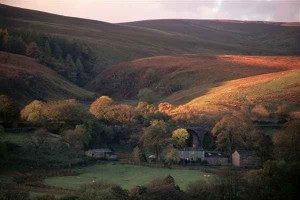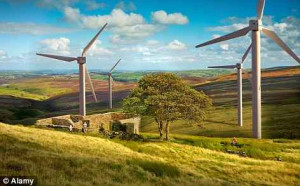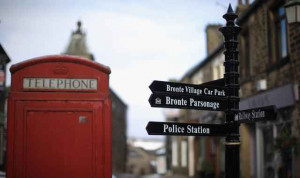Campaigners against a plan to build wind turbines on moors associated with the Bronte sisters are making their final attempt to coerce councillors and planners to give a thumbs down to the proposal.
People living close to Thornton Moor, west of Bradford, are hoping to prevent the siting of a number of wind turbines on the moor. The moor is a couple of miles from the famous parsonage at Haworth where the Bronte sisters and their family lived, and which is now preserved as a museum.
Experts on the work of the Bronte sisters say that their work – including Emily Bronte’s Wuthering Heights – was heavily influenced by the moorland landscape of the area. The Bronte Way footpath also runs straight across Thornton Moor.
Banks Renewables, the developers, want to build four turbines near to the route of the footpath. Councillors are due to meet in a few days to decide whether to allow the first stage of the plan – a 200ft high wind monitoring mast. This is to measure the direction and strength of the wind, necessary to see whether the location is viable for effective renewable energy generation from the wind.
A spokesman for a pressure group- the Thornton Moor Windfarm Action Group said “It’s too close to a Site of Special Scientific Interest and it’s too close to other important sites. It’s also too close to many houses in the area. Quite simply, the site is totally inappropriate and we’re determined to fight it.”
Banks Renewables, said that the test mast would have minimal visual impact as it was so slender. They emphasised the importance of transferring to more sustainable energy sources, including wind power.
Sir Bernard Ingham, former press spokesman for Margaret Thatcher when she was Prime Minister, and an opponent of wind farms and supporter of nuclear energy who was brought up in Bronte country, said: “It is a disgrace. We have no energy policy, but we have a first-class policy to wreck every bit of countryside we can.” That’s almost hysterical in tone, Sir Bernard!
Even some artist’s impressions of what the turbines will look like are not to scale and pure speculation as to siting
Banks Renewables, said that the proposed scheme would generate adequate electricity a year for up to 4,500 houses ‘Developing sustainable, low-carbon power is essential to all our futures,’ they said.
The objections appear to be based on the effects the turbines may have on visitors to the area, adversely affect tourism, and that the Bronte’s wouldn’t have liked it if they were around today. The chair of the Action Group claimed she was not a “nimby” (not in my back yard) claiming that people were used to wind farms, but that the turbines would be very large and nearer to houses than hitherto.
The facts are that the moorland is owned by Yorkshire Water, and the company want to build four wind turbines, each 100 metres high, if the test mast information is favourable. Visitors to the Bronte museum have said about wind turbines “They shouldn’t be in places of historic interest,” and “I realise there’s a need for renewable energy, but not in locations like this.”
While one may have sympathy for locals’ views, one wonders where they suggest that we might site wind turbines in order to meet our international obligations to reduce carbon poisoning and move more towards renewable energy. The English countryside has changed over the centuries and decades and will continue to change. These may be hard choices to make, but the erection of the turbines, if it proves feasible, will not destroy buildings, and one might speculate till the cows come home about whether the Brontes would have approved. Let’s hope the Council make the right decision and prove that nimbyism is not to flourish in Yorkshire!





